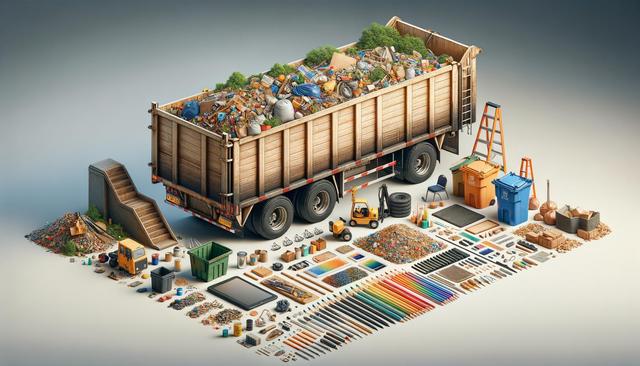Trailer Size and Capacity
One of the first considerations when purchasing a dumpster trailer is its size and load capacity. The right size depends on your intended use, whether for residential cleanup, construction debris, or landscaping waste. Common sizes range from 10 to 30 cubic yards, with weight capacities varying accordingly. A larger trailer can handle bulkier items and reduce the number of trips needed, which can improve efficiency for businesses and contractors. However, a smaller trailer might be more maneuverable and easier to tow, especially in tight urban environments.
When evaluating capacity, keep in mind both volume (cubic yards) and weight limits (gross vehicle weight rating or GVWR). Overloading a trailer can lead to safety issues and potential fines. Consider the density of the materials you plan to haul—heavy materials like concrete or soil require trailers with higher weight ratings, even if the volume is moderate.
Material and Build Quality
The durability of a dumpster trailer is largely influenced by the materials used and overall build quality. Steel is a common choice for its strength and resistance to wear, especially for heavy-duty applications. Look for trailers with reinforced frames, welded seams, and corrosion-resistant coatings to withstand the rigors of frequent use and exposure to the elements.
Important features to assess include:
- Gauge of the steel used in the body and frame
- Protective coatings (e.g., powder coating or galvanization)
- Quality of welds and joints
- Structural reinforcements for high-stress areas
Trailers built with attention to these details typically offer longer service life and better performance under load.
Dump Mechanism Type
Dumpster trailers come with different dump mechanisms, each with its own advantages. The three primary types are hydraulic, manual, and scissor lift systems. Hydraulic systems are among the most popular due to their ease of use and efficiency. They allow users to unload materials with minimal effort, which is especially helpful for frequent or large-scale dumping tasks.
Manual dump systems are usually found on smaller trailers and are more affordable, but they require more physical effort. Scissor lifts offer higher lifting capabilities and stability during the dump process, making them suitable for uneven terrain or heavier loads. When choosing a dump mechanism, consider how often you’ll be unloading and the physical effort you’re willing to invest.
Axle Configuration and Suspension
The axle setup and suspension system of a dumpster trailer play a critical role in load distribution, ride comfort, and towing stability. Trailers typically come with either single or tandem axles. A single axle is lighter and better suited for smaller loads and tighter maneuvering, while tandem axles offer greater load capacity and stability, particularly over longer distances or rough roads.
Suspension types also vary, with leaf spring and torsion axles being the most common. Leaf springs are durable and cost-effective, making them a standard option for many trailers. Torsion axles provide a smoother ride and better handling but tend to be more expensive. Key factors to consider include:
- Expected load weight and distribution
- Road conditions and travel distance
- Towing vehicle compatibility
Choosing the right axle and suspension configuration ensures safer transport and reduces wear on both the trailer and towing vehicle.
Ease of Maintenance and Additional Features
Maintenance requirements should also be part of your purchasing decision. Trailers with easily accessible grease fittings, rust-resistant components, and modular parts can simplify upkeep and reduce long-term costs. Check for features that support convenience and safety, such as:
- Removable sides or fold-down panels for easier loading
- Built-in tarp systems to contain debris
- LED lighting for visibility and compliance
- Integrated ramps for equipment loading
While these features may increase the upfront cost, they often contribute to better performance and user experience. Also, consider the availability of spare parts and customer support when choosing a trailer manufacturer or dealer.
Conclusion: Making an Informed Purchase
Investing in a dumpster trailer requires careful evaluation of size, build quality, dump mechanism, axle configuration, and maintenance features. Whether you’re a contractor managing construction waste or a homeowner tackling large-scale cleanups, choosing a trailer that aligns with your specific needs will improve operational efficiency and safety. By focusing on these key features and understanding how they impact usability and durability, you can make a well-informed decision that adds long-term value to your investment.






